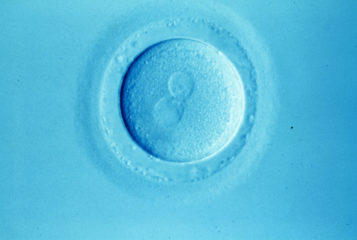| Foreign Bodies, Common Ground
Wellcome Collection, 183 Euston Road, London NW1 2BE, UK |
 |
Whether I'm a good scientist is open to debate, but I'm certainly no artist — in fact I was explicitly forbidden to do GCSE art after being told I would fail.
Stung by the experience, I've since shied away from anything remotely arty. So it was with some trepidation that I went along to the Wellcome Collection's 'Foreign Bodies, Common Ground'.
The exhibition is the Wellcome Trust's most recent exercise in public engagement, conceived in an attempt to make the worlds of art and science collide.
Six artists, ranging from photographers, performance groups and multimedia artists, were sent to Wellcome-funded research centres around the world. These included the Sanger Institute here in the UK, as well as centers in Kenya, Malawi, South Africa, Thailand and Vietnam.
The goal of these 'foreign bodies' was to immerse themselves in scientific research for six months, and then produce some work that reflected what they learnt. Ultimately, Wellcome hopes to stimulate new thinking and debate in the two disciplines that are often thought of as being very distinct.
In hindsight I am not sure what I was expecting, except perhaps for some more science, but despite trying to pull these two worlds together, the end result of 'Foreign Bodies, Common Ground' is… an art exhibition.
And no art exhibition is complete without hushed tones, fluorescent lighting and oddly non-specific descriptions of each piece on white card.
Nonetheless, after my initial panic on witnessing such a scene, the exhibition did get me thinking.
Although the process of 'science' may well have been similar every time, each artist had a very different experience during their residencies. This is reflected in the variation of art on display, both in style and tone. There are photographs, some sculptures, a shadow-installation, video screens, music and a fun, interactive set where you can put on an adorned lab coat and take a photo of yourself with science related props.
But despite this variation, a common theme is rarely far from the surface. Several artists worked closely with the public to provide insight into how cultural opinions can influence research and its interpretation. As a result, many pieces depict the divide between researchers and a 'wider community' which often views medical research with confusion and skepticism.
One piece deserves particular mention. Katie Paterson spent six months in the Wellcome Trust labs in Cambridge, where she became interested in genomic archaeology. Her contribution, 'Fossil Necklace', is nothing less than extraordinary.
Exhibited in a dark room, the necklace is made from 170 beads, each carved from a fossil that represents a major event in evolution. Some of the beads represent single-celled organisms and are millions of years old. Others represent the emergence of vertebrates from the sea to land - the hottest period in the planet's history - or the origin of language. It's mind-blowing.
As a whole, the exhibition has made me take a less dismissive view of art, and made me appreciate the artists' dedication. In fact, a lot of similarities exist between art and science - curiosity, immense attention to detail, and the desire to communicate.
In this exhibition, the Wellcome Trust's efforts in using art to help make science more accessible to the public are well-aimed. And, yes, researchers perhaps need reminding how our work fits into a wider context and that we too can learn from other disciplines.




Leave a Reply
You must be logged in to post a comment.